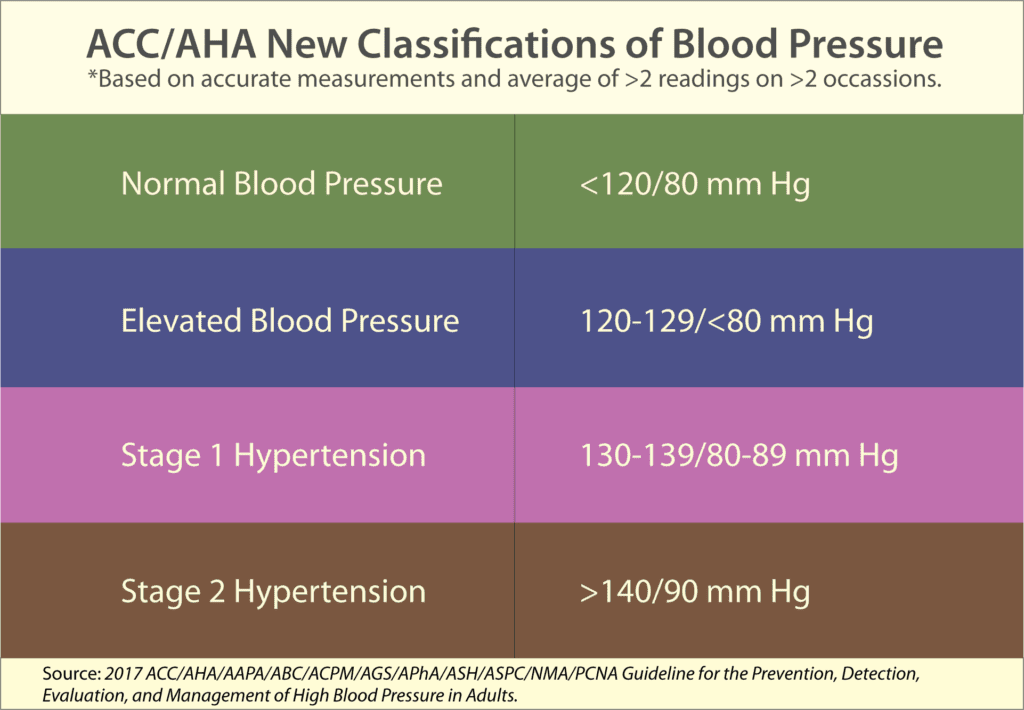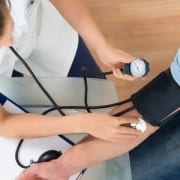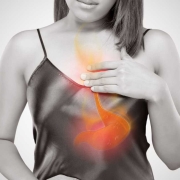What the New High Blood Pressure Numbers Mean For You
When the American College of Cardiology (ACC) & American Heart Association (AHA) lowered the numbers that define high blood pressure (HBP) this past November, 46% of the adult population in the United States suddenly met the new criteria – that’s nearly half!
What was the motivation for making these changes that placed an unwelcomed label on so many people virtually overnight? It rests in the reality that despite the enormous amount of research, outreach, and medical advances, heart disease and stroke still remain 2 of the leading causes of death in men and women in the United States. Broadening the scope of high blood pressure numbers will generate more conversations between patients and health care providers about the associated risks that go with HBP, namely developing heart disease or having a future cardiac event. More importantly, it gives physicians the opportunity to introduce early non-pharmacological intervention methods to a wider population.
What is High Blood Pressure (HBP)?
When the blood pressure sleeve tightens around a patient’s arm it is taking two important measurements: the force of blood being pushed against artery walls when the heart pumps (systolic, or top number) and when the heart is at rest between beats (diastolic, or bottom number). These numbers are of particular interest to doctors as they can be an early warning sign of the patient’s risk for a future cardiac event or stroke; the higher the numbers, the higher the risk.
There are many factors that can elevate blood pressure, age being the most common, but lifestyle (think stress, activity levels, diet, etc…), weight, gender, race, medications, and certain medical conditions can also contribute. When a person is diagnosed as having high blood pressure (also called hypertension) it means very simply that there is too much force on a regular basis putting stress on the heart and blood vessels. Over time this constant, excessive pressure can cause damage to the walls of the arteries and blood vessels, causing them to narrow or leak, creating areas where plaque deposits can accumulate causing hardening and narrowing of the arteries, reducing elasticity, and all the while producing no obvious symptoms.
According to the American Heart Association, nearly half the population of patients with high blood pressure do not have it under control. This is an alarming statistic as so much is known about the correlation between high blood pressure and cardiovascular disease. But the good news is that high blood pressure is something that can be controlled with lifestyle modifications and, when necessary, medications.
Know Your Numbers!
The new guidelines stress the importance of proper blood pressure readings by both health care providers and patients. Blood pressure can be easily taken at home with the right device, and knowing your numbers is the first line in prevention!

Previously, blood pressure measured between 120 – 139 mm Hg was defined as pre-hypertensive, however, this terminology no longer exists. Now, patients diagnosed with having Elevated Blood Pressure are encouraged to look at a number of non-drug interventions as a first approach. These are lifestyle modifications that will not only help lower blood pressure but are positive changes for all aspects of health.
Non-pharmacological interventions recommended in the new guidelines include:
- Weight loss
- Eating a heart-healthy diet
- Regular exercise
- Reducing sodium intake
- Potassium supplementation
- Stopping or reducing alcohol consumption
In addition to the recommendations above, there are several mind-body therapies that have also proven effective in lowering blood pressure.
- A 2013 study shows how a regular Mindfulness-based Stress Reduction program was able to reduce both the systolic and diastolic blood pressure of participants over a period of 8 weeks.
- Studies on Pranayama Breathing, a yogic breathing technique, have shown that when practiced regularly it can have significant effects on lowering blood pressure.
- Slow breathing methods and techniques that impact the interaction between the heart and the brain used in Heart Rate Variable Biofeedback have been shown to reduce stress and have positive effects on the autonomic nervous system. Studies have shown that this can be a successful adjunct therapy in lowering blood pressure levels in pre-hypertensive patients.
- Yoga, which incorporates low-impact exercise with many of the wonderful stress-reducing elements of meditation, has also shown success as an effective adjunct therapy in patients with hypertension.
Patients now diagnosed with Stage 1 or Stage 2 Hypertension (HTN) would likely be prescribed anti-hypertensive medication in addition to the lifestyle recommendations above, with dosages and medications varying depending on each patient’s risk assessment and medical history.
The startling reality is that heart disease is responsible for 1 out of 4 deaths in the U.S. each year. The new guidelines introduce a number of wonderful non-drug therapies that can have an immediate effect on overall health and well-being. By knowing your numbers and taking proactive measures to get heart-healthy today, you can make a significant impact on your health in the future.









Leave a Reply
Want to join the discussion?Feel free to contribute!